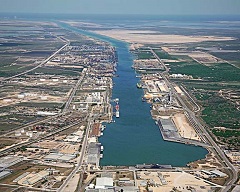|

New eNewsletter from OUP
Grantee Spotlight: LeMoyne Owen College Community Development Corporation Revitalizes Soulsville
Soulsville, a low-income community in southern Memphis, Tennessee, is home to LeMoyne-Owen College, which has long been interested in the neighborhood’s welfare. In 1989, the college founded the LeMoyne-Owen College Community Development Corporation (LOCCDC), which is a HUD-designated community housing development organization. Between 1993 and 2009, the college received several Historically Black Colleges and Universities (HBCU) grants from HUD, and LOCCDC has used the grant money to carry out housing, economic, and community revitalization activities in the Soulsville community. Read More
Facilitators of Change: OUP’s Connections and Resources Transform and Empower Communities
In a time of declining federal funding, partnerships that can leverage resources to accomplish complementary goals are vital to creating and maintaining successful communities. HUD’s Office of University Partnerships (OUP) has fostered these partnerships by investing funds in institutions of higher education (IHEs), which use these grants to secure additional funding and tackle difficult community and economic development issues. OUP also funds IHE research and service learning that empowers future leaders. A recently released report, “Facilitators of Change: OUP’s Connections and Resources Continue to Transform and Empower Communities,” highlights successful partnerships and outcomes that OUP grants have made possible. The report also discusses how OUP will improve efficiency in communicating with grantees and continue to be a valuable resource for IHEs and communities despite funding reductions. Read More
|
|
|

Feature Story
Brownsville Aims to Become International Economic Hub
Brownsville, Texas has long stood in the shadow of the state's industrial giants, Houston and San Antonio. Located just north of the Rio Grande River at the southernmost tip of the state’s Gulf Coast, the rapidly growing border city of nearly 200,000 residents has been plagued by high poverty rates, per capita incomes well below state and national averages, and low levels of educational attainment. Poorly coordinated infrastructure and land use decisions have failed to take advantage of the city’s chief economic drivers, the Port of Brownsville and the city’s location on the border of Mexico, which provides easy access to the rapidly growing economies of Latin America.
Read More
|
|